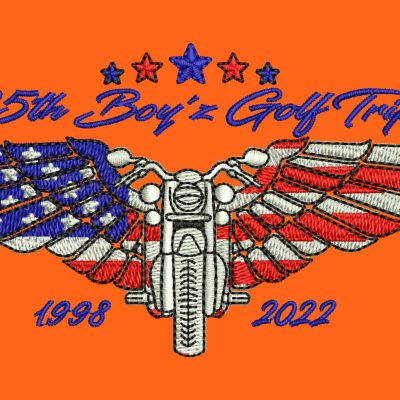Check Out Different Kinds Of Needlework Digitizing Techniques
Embroidery digitizing has actually evolved dramatically over the years, offering a myriad of methods to bring layouts to life in the digital world. The world extends to much more innovative techniques like photorealistic embroidery digitizing and the fascinating realm of 3D embroidery digitizing.
Conventional Hand Embroidery Digitizing
Traditional hand embroidery digitizing involves the procedure of converting intricate hand-stitched designs right into electronic styles for maker needlework. This method requires proficient craftsmens to thoroughly evaluate the handcrafted style and after that use specialized software to recreate it in an electronic layout. Each stitch, shade, and information needs to be very carefully equated to make sure that the essence of the original hand embroidery is maintained in the electronic version.
One of the vital obstacles of standard hand embroidery digitizing is capturing the intricacies and subtleties of the handmade layout. Digitizing for Embroidery. Artisans have to possess a deep understanding of different needlework methods, such as satin stitch, chain stitch, and French knots, to accurately reproduce these methods in the electronic world. Additionally, they require to have a keen eye for information to make sure that the digital layout preserves the very same level of artistry and workmanship as the original hand-stitched item
Punching Technique
To flawlessly transition from traditional hand needlework digitizing to the punching strategy, artisans have to now concentrate on converting the detailed digital layouts into guidelines that embroidery equipments can translate. The boxing method entails utilizing specialized software to develop digital data which contain commands for the embroidery maker to follow. This procedure needs a deep understanding of not just the layout itself but additionally the capacities and restrictions of the embroidery equipment.

Auto-Digitizing Software Programs
Embroidery digitizing has actually been transformed by the introduction of auto-digitizing software application, supplying artisans with sophisticated tools to convert electronic layouts into embroidery device guidelines efficiently. Auto-digitizing software application programs make use of formulas to analyze digital pictures or vector files and create embroidery designs immediately. These programs permit quick and precise conversion of intricate styles right into stitch patterns, conserving time and effort for embroiderers.
One of the vital advantages of auto-digitizing software application is its straightforward interface, making it easily accessible to both novices and experienced digitizers. These programs frequently consist of attributes such as stitch editing and enhancing tools, thread color matching, and the capability to preview the final embroidered style. Furthermore, auto-digitizing software application can handle complicated styles with multiple shades and elaborate details, generating top notch embroidery documents appropriate for various garments and textile tasks.
While auto-digitizing software application offers ease and effectiveness, it is vital for customers to comprehend the limitations of automated digitizing. Fine-tuning and hands-on adjustments might still be required to attain the desired needlework quality, particularly when managing complex or distinct layouts. By leveraging the capacities of auto-digitizing software application along with hands-on digitizing strategies, craftsmens can enhance their embroidery digitizing procedure and develop magnificent stitched items.
Photorealistic Embroidery Digitizing
Making use of sophisticated digital imaging strategies, achieving photorealistic lead to embroidery digitizing has ended up being a popular skill among contemporary artisans. This technique entails converting high-resolution photos into detailed stitch patterns that closely simulate the initial layout, resulting in needlework items that exhibit realistic information and depth.
To attain photorealistic needlework digitizing, craftsmens have to possess an eager eye for detail and an extensive understanding of just how various stitch kinds and densities can affect visit site the final outcome. By very carefully drawing up each color and color in the picture, embroiderers can develop a digital documents that guides the embroidery equipment to duplicate the subtleties of the initial photo precisely.
Photorealistic needlework digitizing is particularly prominent in developing custom-made designs for clothing, home design, and art pieces where recording the essence of a photograph or art work is important. This strategy permits artisans to change memories, landscapes, portraits, and complex artwork into magnificent stitched masterpieces that showcase a anonymous blend of typical workmanship and sophisticated technology.
3D Embroidery Digitizing
With the improvement of digital imaging techniques in achieving photorealistic lead to embroidery digitizing, the expedition of 'D Needlework Digitizing' offers a new measurement to the complexities of style replication. 'D Needlework Digitizing' refers to the three-dimensional digitizing technique that adds depth and appearance to needlework designs, developing an extra reasonable and visually enticing final item. This method uses software program that replicates the effect of light and darkness on the embroidery design, boosting its general aesthetic effect.
One of the vital benefits of 'D Needlework Digitizing' is its capability to make designs look even more lifelike and vibrant. By adding deepness to the embroidery style, the end product appears more practical and fascinating (Digitizing for Embroidery). In addition, this method enables even more creative flexibility in design implementation, enabling embroiderers to trying out different appearances and impacts that were formerly challenging to accomplish
Conclusion
